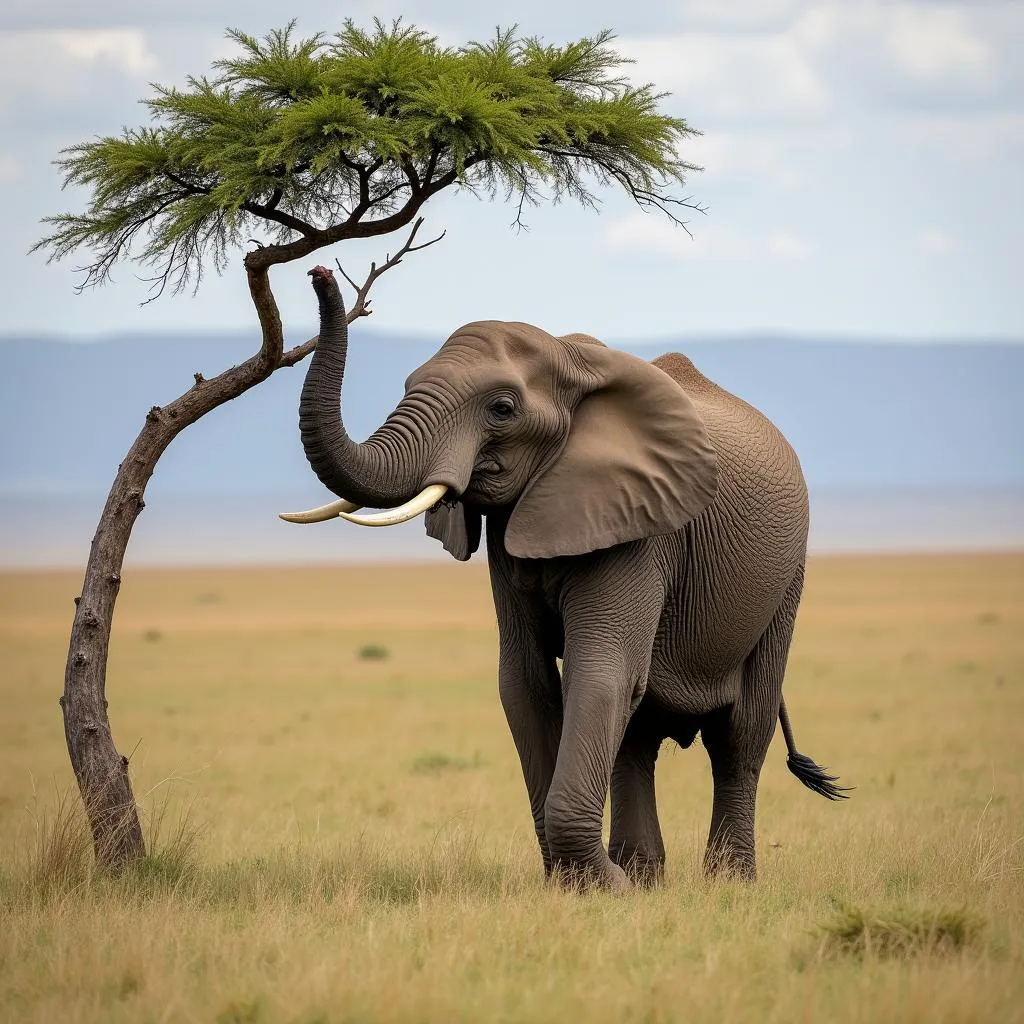African Elephant: The Gentle Giants of the Savannah
The African elephant, a majestic creature roaming the vast savannas of Africa, is an icon of the continent’s rich biodiversity. Its size, intelligence, and social behavior have fascinated humans for centuries. These gentle giants play a vital role in their ecosystems, shaping landscapes and supporting a diverse array of wildlife. This article explores the fascinating world of African elephants, delving into their biology, behavior, and the challenges they face in a changing world.
Unveiling the Majesty of African Elephants
African elephants are the largest land mammals on Earth, and they are easily distinguished from their Asian counterparts. They have large, fan-shaped ears, a trunk with two finger-like projections at the end, and tusks that are curved and pointed. Their thick, wrinkled skin ranges in color from gray to reddish brown, reflecting the harsh sun and dusty environments they inhabit.
There are two distinct species of African elephants: the African bush elephant and the African forest elephant. The bush elephant, larger and more common, is found in open grasslands and savannas across sub-Saharan Africa. The forest elephant, smaller and with straighter tusks, prefers the dense forests of Central and West Africa.
A Symphony of Sounds: Communication and Intelligence
African elephants are known for their remarkable intelligence and complex communication systems. Their social structure, characterized by strong family bonds, is hierarchical and matriarchal. The matriarch, the oldest and most experienced female, leads the herd, guiding its movements and protecting its young.
Communication among elephants is a fascinating blend of vocalizations, visual signals, and olfactory cues. They use a wide range of trumpets, roars, and rumbles to express emotions and convey information over long distances. Their powerful sense of smell allows them to detect water sources, identify individuals, and even recognize deceased members of their family.
The Eco-Guardians: Their Impact on the Environment
African elephants are key players in their ecosystems, exerting a profound influence on plant life and shaping the landscapes they inhabit. Their grazing and browsing habits help to create clearings in dense forests, allowing sunlight to reach the forest floor and supporting a variety of plants. They also disperse seeds through their dung, contributing to the regeneration and diversity of vegetation.
Elephants create waterholes by digging into the ground, providing essential water sources for other animals during dry seasons. Their dung also serves as a rich fertilizer, enhancing soil fertility and contributing to the growth of plants.
Facing the Challenges: Conservation and Threats
Despite their importance, African elephants face numerous threats, including habitat loss, poaching, and human-wildlife conflict. As human populations expand and land use changes, elephant habitats are fragmented, reducing their range and access to essential resources.
Poaching for ivory remains a serious threat, particularly in areas with weak law enforcement. The illegal ivory trade continues to drive the demand for elephant tusks, pushing these magnificent creatures closer to extinction. Human-wildlife conflict arises when elephants venture into human settlements in search of food or water, leading to crop damage, livestock loss, and sometimes even human casualties.
The Importance of Conservation Efforts
Conserving African elephants is crucial for maintaining the health and balance of their ecosystems. Efforts are underway to combat poaching, protect elephant habitats, and promote sustainable human-elephant coexistence. Education and awareness campaigns play a vital role in changing attitudes toward elephants and encouraging responsible practices.
Protecting Our Gentle Giants: A Collective Responsibility
The fate of African elephants hangs in the balance. It is our responsibility to ensure their survival and protect these gentle giants for generations to come. By supporting conservation organizations, advocating for responsible policies, and making informed choices, we can play a part in safeguarding the future of these remarkable creatures.
 African elephant in the savanna
African elephant in the savanna
FAQ
1. What is the difference between African bush elephants and African forest elephants?
The African bush elephant is larger, has larger ears, and is found in open savannas, while the forest elephant is smaller, has straighter tusks, and prefers dense forests.
2. Are African elephants endangered?
African elephants are classified as “Vulnerable” on the IUCN Red List, meaning they face a high risk of extinction in the wild.
3. How do African elephants communicate?
Elephants communicate through a combination of vocalizations (trumpets, roars, rumbles), visual signals (body language), and olfactory cues (scent marking).
4. What is the role of the matriarch in an elephant herd?
The matriarch, the oldest and most experienced female, leads the herd, guides its movements, and protects its young.
5. What are the main threats facing African elephants?
The main threats to African elephants include habitat loss, poaching for ivory, and human-wildlife conflict.
Conclusion
African elephants are integral to the biodiversity and health of the African continent. Their intelligence, social complexity, and ecological role make them fascinating and indispensable creatures. However, they face significant threats, highlighting the urgent need for conservation efforts to secure their future. By recognizing the value of these majestic animals and supporting conservation initiatives, we can ensure that these gentle giants continue to roam the savannas of Africa for generations to come.


